Cosmos network is in excellent shape and there are several indicators to confirm this. First of all, the volume of trading on its main decentralized exchange, Osmosis, continues to rise. This is the first native cross-chain automated market maker (AMM) protocol on Cosmos network. Since it was launched on June 24th, volume and liquidity on Osmosis have been on the rise, hitting 63M and 694M respectively. Recently, the adoption of the IBC protocol by Terra has also brought UST to this AMM, which is extremely widespread and traded thanks to the numerous cases of use.
Its native token, OSMO, was partly distributed to ATOM holders through a Fairdrop, to ensure decentralized governance. After an up and down trend, its price started to consolidate around mid-September and is now solidly standing above $ 6. Thanks to the adoption of the inter-connectivity protocol between blockchains by numerous projects born with the Cosmos SDK technology, since its birth this DEX has also seen an increase in the number of exchangeable tokens, which to date are twenty.
If you have ATOM, CRO, JUNO, LUNA or other tokens supported by the platform, you will probably be interested in knowing how to use it.
First you will need to download Keplr, the Interchain wallet that supports a whole series of networks implemented with Cosmos SDK technology, first of all Cosmos. It’s a browser extension that can be easily installed on Chrome (or Brave) and allows us to keep safe our tokens related to all the supported blockchains, as well as staking and voting operations for the governance of the networks themselves.
Once installed, you will need to create a new wallet or, if you have one, import an existing one. If you have ATOMs staked on non-custodial wallets (Trust Wallet, for example), you can configure Keplr by importing the seed of the wallet already containing resources, so they can be viewed and managed with Keplr.
Once this is done we can move to the Osmosis app, where we’ll log in with Keplr. Once logged in, we will be able to operate on the DEX.
The first thing to do, both to exchange tokens and to participate in liquidity pools, is to transfer some resources to the portal through the IBC protocol. Find the withdrawal and deposit addresses of the individual coins in the "Assets" section. You can use them to deposit, for example, ATOMs and LUNAs and participate in the related LP.
In the "Pools" section you will find, in fact, a series of LPs in which you can participate with your assets. More experienced users will also have the possibility to create their own pool by inserting a pair of tokens not present among those already existing. The latter operation, however, has a cost of 100 OSMO, which will be destined for the Osmosis Community pool. Always pay attention, when providing liquidity to a pool, to the impermanent loss, which occurs when one of the two tokens entered in the LP increases (or decreases) more than proportional to the other.
On Osmosis you can also trade your tokens with others supported by the platform. Instead, for the staking of your assets and to participate in the governance of individual networks, you will be redirected to the Keplr platform.
Osmosis really represents a turning point not only for the Cosmos network, but also for all those blockchains that have been implemented using its technology. The internet of blockchains, thanks to Cosmos and the IBC protocol, has almost become a reality.

La rete Cosmos è in ottima forma e ci sono diversi indicatori a confermarlo. Primo fra tutti, il volume di scambi sul suo principale exchange decentralizzato, Osmosis, è in continua ascesa. Si tratta del primo protocollo nativo cross-chain automated market maker (AMM) su Cosmos. Da quando è stato lanciato, il 24 giugno, il volume e la liquidità su Osmosis sono stati in continua ascesa toccando, rispettivamente, i 6M e 582M. Recentemente, l’adozione del protocollo IBC da parte di Terra ha portato su questo AMM anche gli UST, estremamente diffusi e scambiati grazie ai numerosi casi d’uso.
Il suo token nativo, OSMO, è stato in parte distribuito agli holder di ATOM attraverso un Fairdrop, per garantirne una governance decentralizzata. Dopo un andamento altalenante, il suo prezzo ha iniziato a consolidarsi intorno alla metà di settembre e ora si attesta solidamente sopra i $6. Grazie all’adozione del protocollo di Inter-connettività tra blockchain da parte di numerosi progetti nati con tecnologia Cosmos SDK, dalla sua nascita questo DEX ha visto aumentare oltre alla liquidità anche il numero di token scambiabili, che ad oggi sono venti.
Se avete degli ATOM, CRO, JUNO, LUNA o altri token supportati dalla piattaforma, probabilmente v’interesserà sapere come utilizzarla.
Per prima cosa avrete bisogno di scaricare Keplr, il wallet Interchain che supporta tutta una serie di reti implementate con tecnologia Cosmos SDK, prima fra tutte Cosmos. Si tratta di un estensione facilmente installabile su Chrome (o meglio Brave) e permette di custodire i nostri token relativi a tutte le blockchain supportate, oltre a consentire operazioni di staking e di voto per la governance delle reti stesse.
Una volta installato, dovrete creare un nuovo wallet o, se lo avete, importarne uno esistente. Se avete degli ATOM in stake su wallet non custodial (Trust Wallet, ad esempio), potrete configurare Keplr importando il seed del wallet contenente già delle risorse, in modo da poterle visualizzare e gestire con Keplr.
Fatto questo potremo spostarci sull'app di Osmosis, dove effettueremo il login con Keplr. Una volta loggati, potremo operare sul DEX.
La prima cosa da fare, sia per scambiare token che per partecipare alle liquidity pool, è trasferire un po’ di risorse sul portale attraverso il protocollo IBC. Trovate gli indirizzi di ritiro e deposito delle singole coin nella sezione “Assets”. Potete sfruttarli per depositare, ad esempio, degli ATOM e dei LUNA e partecipare alla relativa LP.
Nella sezione "Pools" troverete, infatti, una serie di LP alle quali potrete partecipare con i vostri asset. Gli utenti più esperti avranno anche la possibilità di creare una propria pool inserendo una coppia di token non presente tra quelle già esistenti. Quest’ultima operazione, però, ha un costo di 100OSMO, che saranno destinati alla Community pool di Osmosis. Fate sempre attenzione, quando fornite liquidità ad una pool, all’impermanent loss, che si verifica quando uno dei due token immessi nella LP cresce (o decresce) in maniera più che proporzionale all’altro.
Su Osmosis potrete naturalmente scambiare i vostri token con altri supportati dalla piattaforma. Per lo staking dei vostri asset e per partecipare alla governace delle singole reti, invece, verrete rindirizzati sulla piattaforma Keplr.
Osmosis rappresenta davvero un punto di svolta non solo per la rete Cosmos, ma anche per tutte quelle blockchain che sono state implementate utilizzando la sua tecnologia. L’internet delle blockchain, grazie a Cosmos e al protocollo IBC, è quasi diventato realtà.
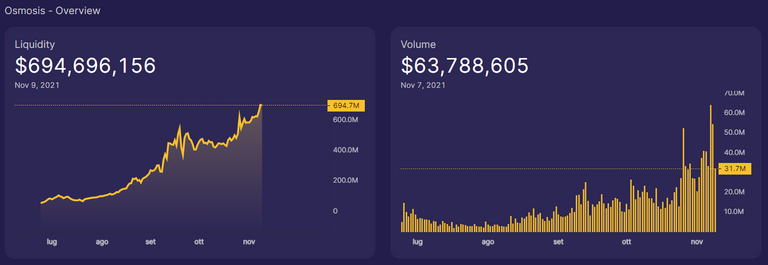

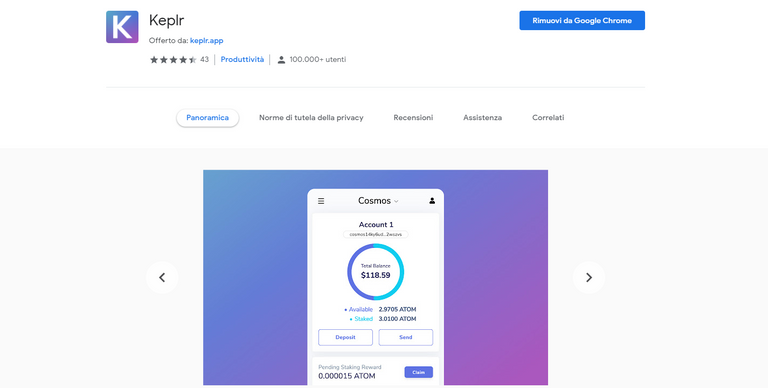
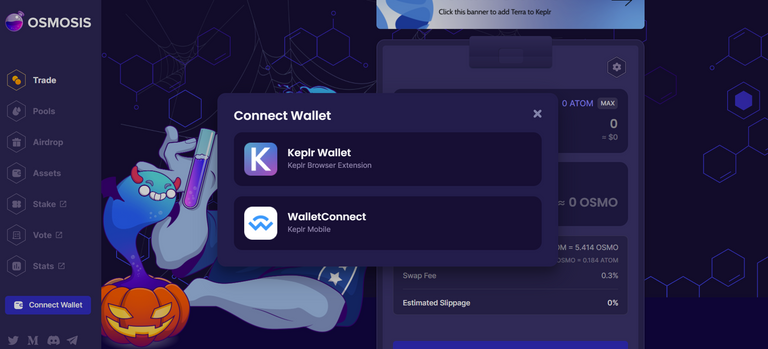
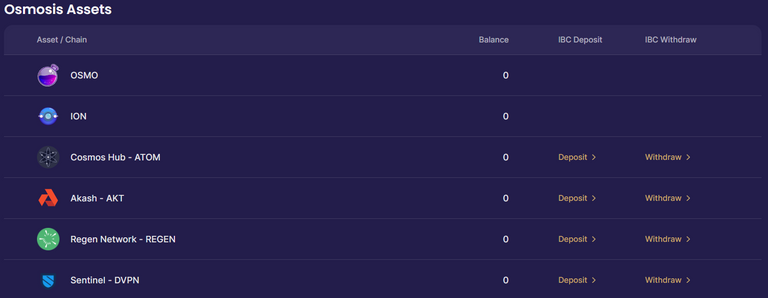
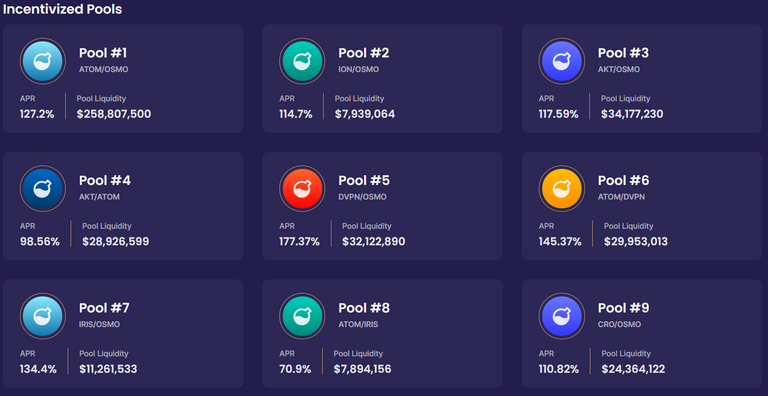

Articoli sempre curati e molto interessanti!
!LUV
Grazie mille! ♥️
Congratulations @ifiwasfrank! You have completed the following achievement on the Hive blockchain and have been rewarded with new badge(s):
Your next target is to reach 2750 upvotes.
You can view your badges on your board and compare yourself to others in the Ranking
If you no longer want to receive notifications, reply to this comment with the word
STOPCheck out the last post from @hivebuzz: